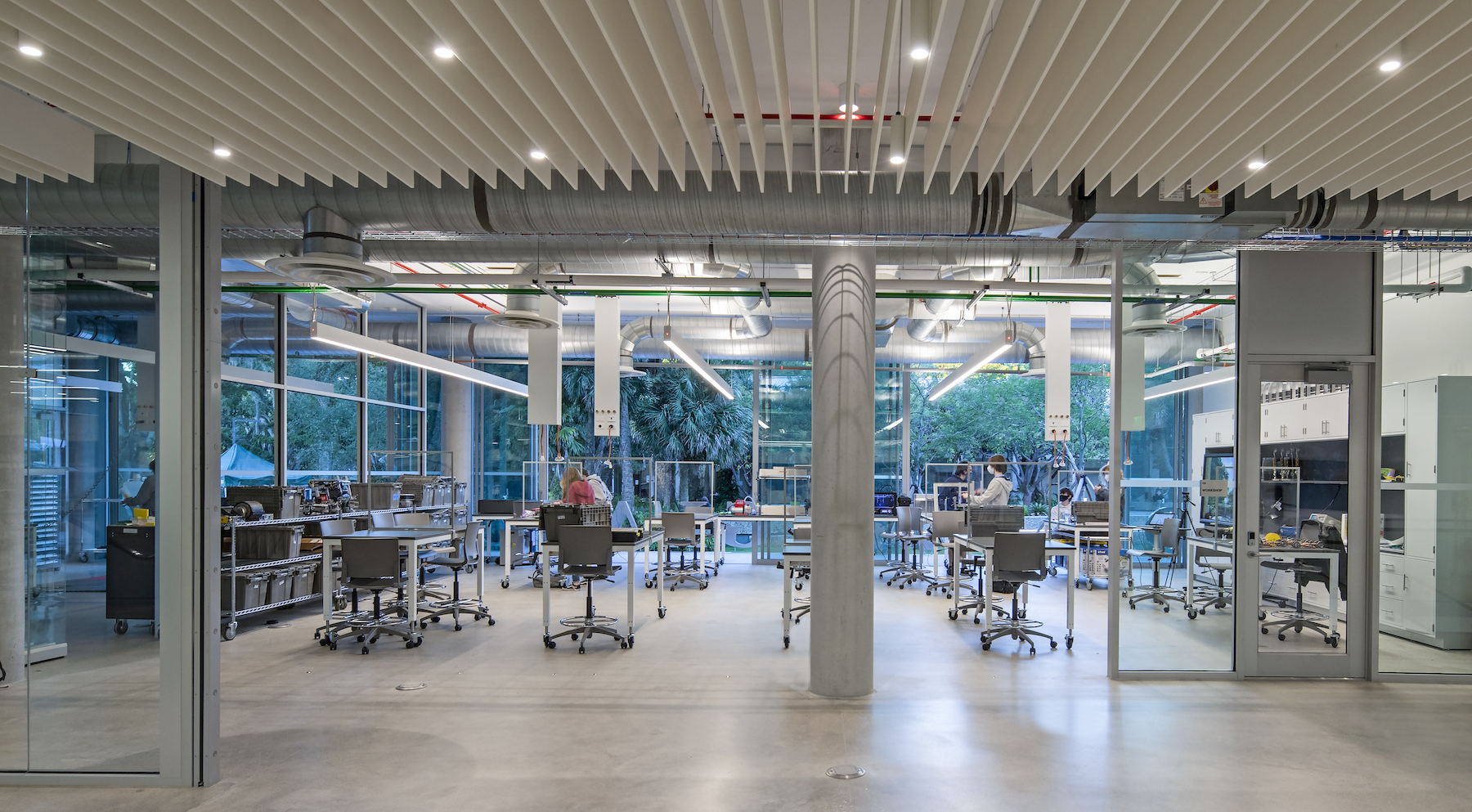When the three-story 45,000-sf Constance and Miguel Fernandez STEM Center for Science and Math opened last September at the entrance of the historic Ransom Everglades School campus in Coconut Grove, Fla., it created a new quad with an outdoor theater and classrooms, art exhibition space, and an outdoor student green. But one thing the new building didn’t have was private offices.
Its designer, Perkins & Will, has seen shared meeting spaces replacing private faculty offices in several of its recent education projects. “This isn’t a trend; it’s here to stay,” says Pat Bosch, Principal and Design Director in P&W’s Miami studio. “We’re seeing it in public schools, too, around the country.
OLD DESIGN IDEAS MADE NEW BY CIRCUMSTANCES
Since the advent of STEM- and STEAM-focused curricula several years ago, schools have been taking their cues from the office and research sectors in terms of rethinking their spaces for collaboration, “with more collision points,” says Bosch.
P&W has a long history of advocating for outdoor learning spaces, and its clients of late are listening to pitches whose angles are about safety and wellness. The shift away from private faculty offices, however, still leaves room for one-on-one learning and communication. P&W’s kit-of-parts approach can include quieter rooms that Bosch believes are less intimidating to students than a teacher’s or principal’s office. “This actually enhances the bespoke educational environment,” says Bosch.
UTILIZING ‘IN-BETWEEN’ SPACES
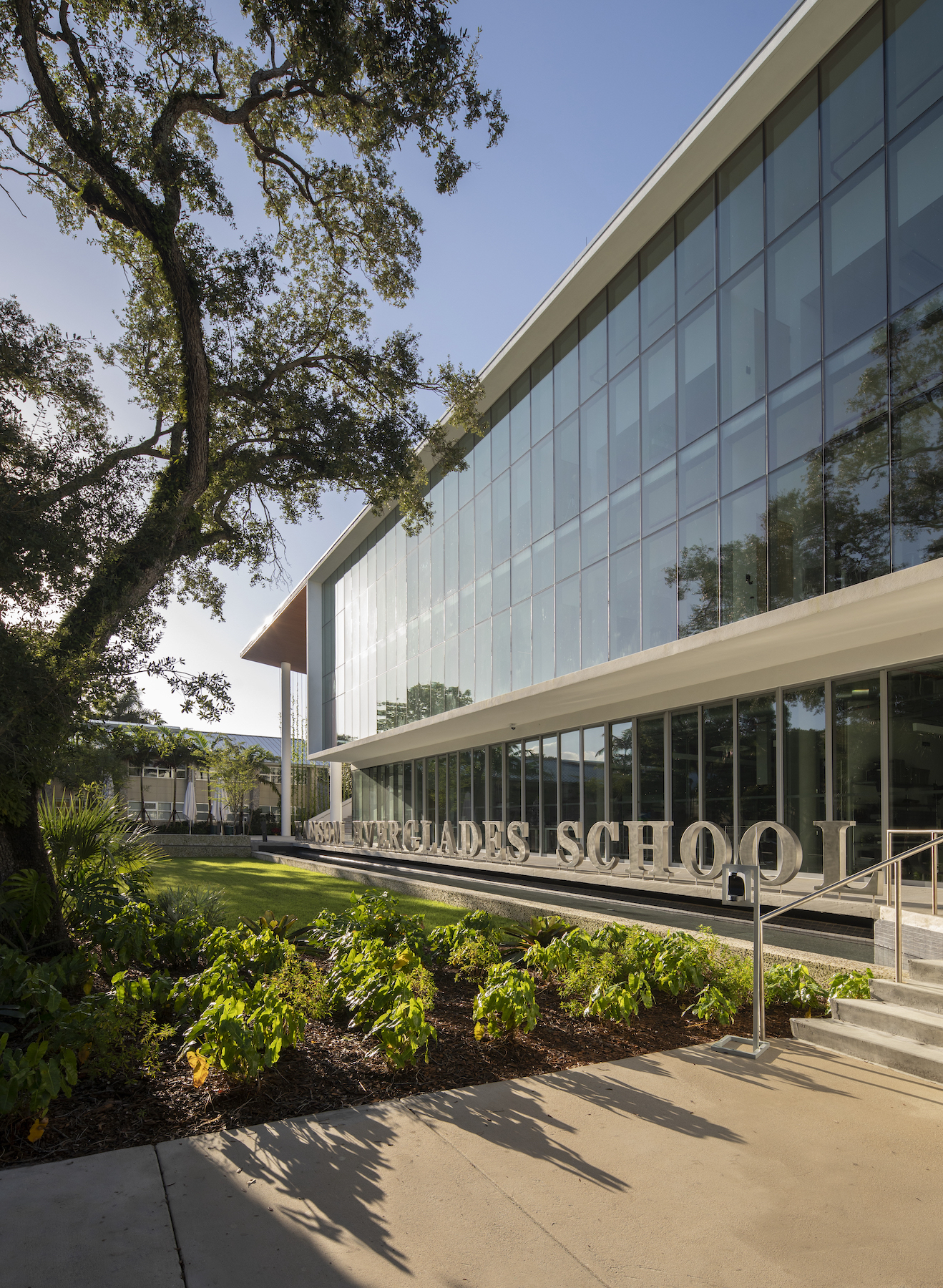
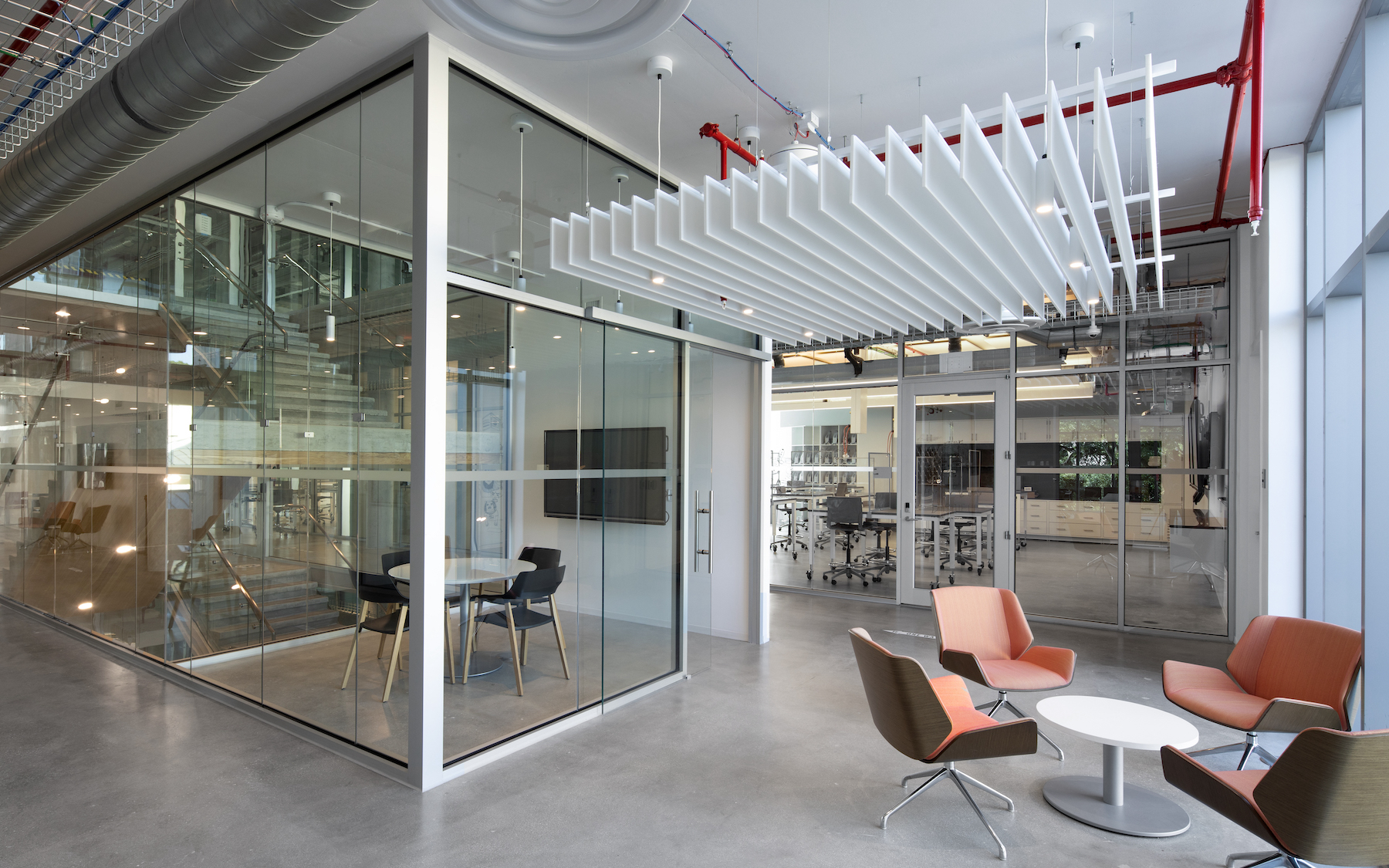
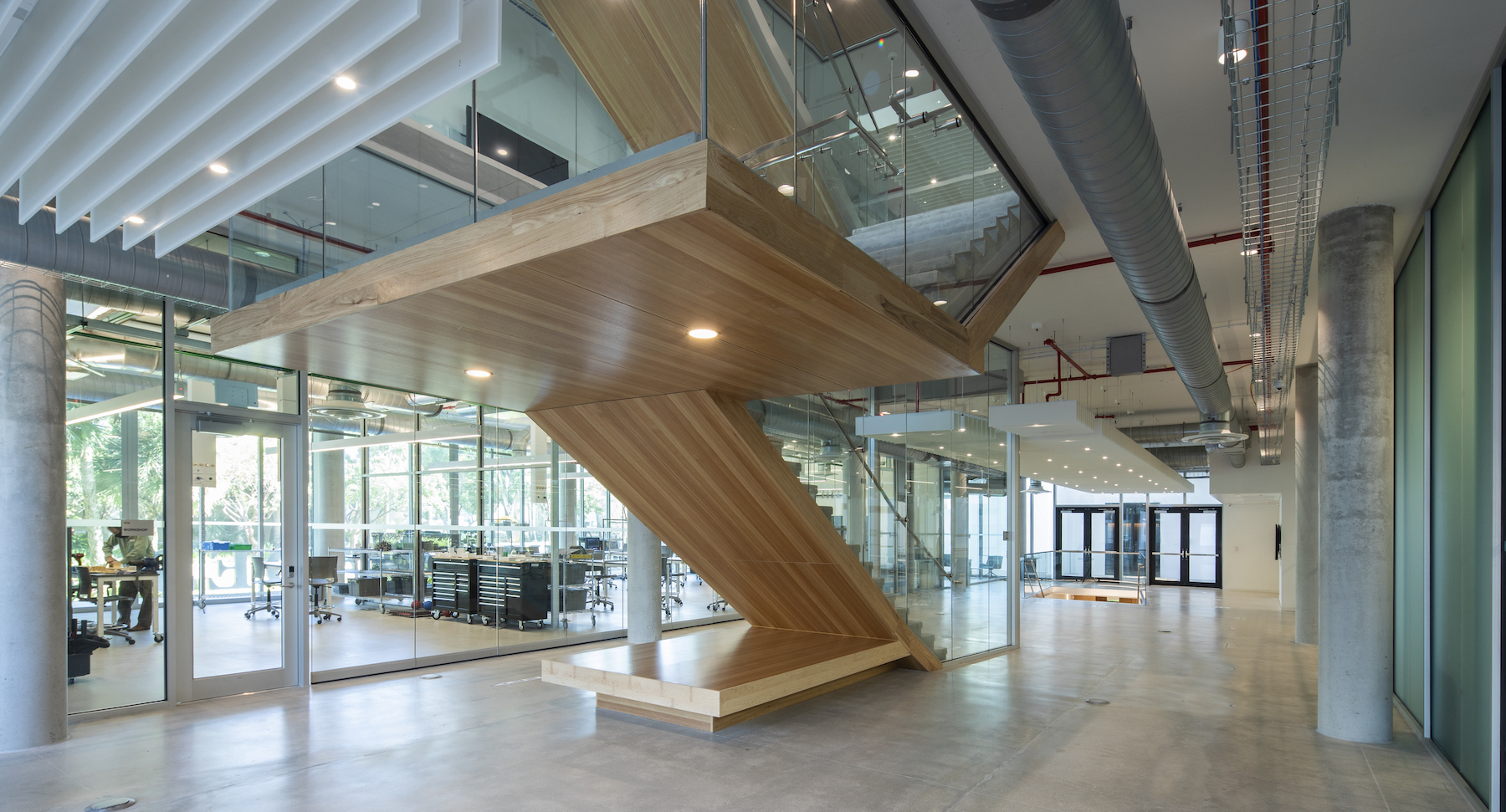
The STEM center at Ransom Everglades School is the result of a design pivot during the COVID-19 pandemic. Essentially a big glass box, Its classrooms and labs are supported by more informal tech-enhanced “in-between” spaces where students and faculty can interact. An aquatics lab functions as a water feature at the front of the building, framed by the exterior student commons and an incubator that was designed to be the center for faculty, administrators, students, and visitors to exchange ideas.
Build by Shawmut Design & Construction, the STEM Center features 10 flexible classrooms with movable walls and furniture, as well as laboratories for earth sciences, biology, chemistry, and physics that integrate with fabrication and maker labs. Utilizing smart-building design throughout, the facility has wide staircases, tech-enabled educational spaces, an outdoor rooftop lab, multi-purpose conference room, and a reconfigurable 200-person auditorium.
Bosch adds that the design also ushered in better circulation for the entire school. “The pandemic propelled this, and now we have a proof of theory.”
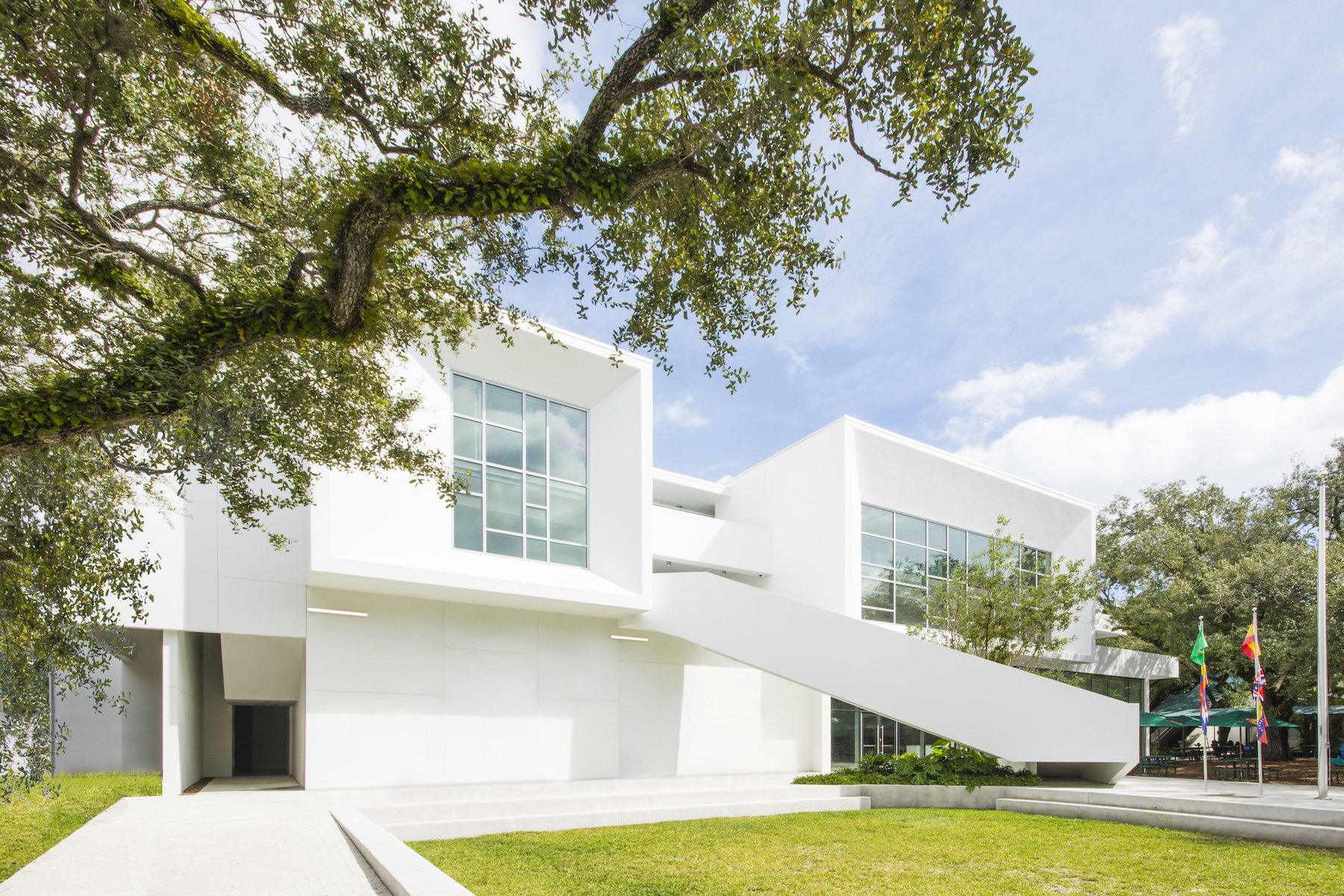
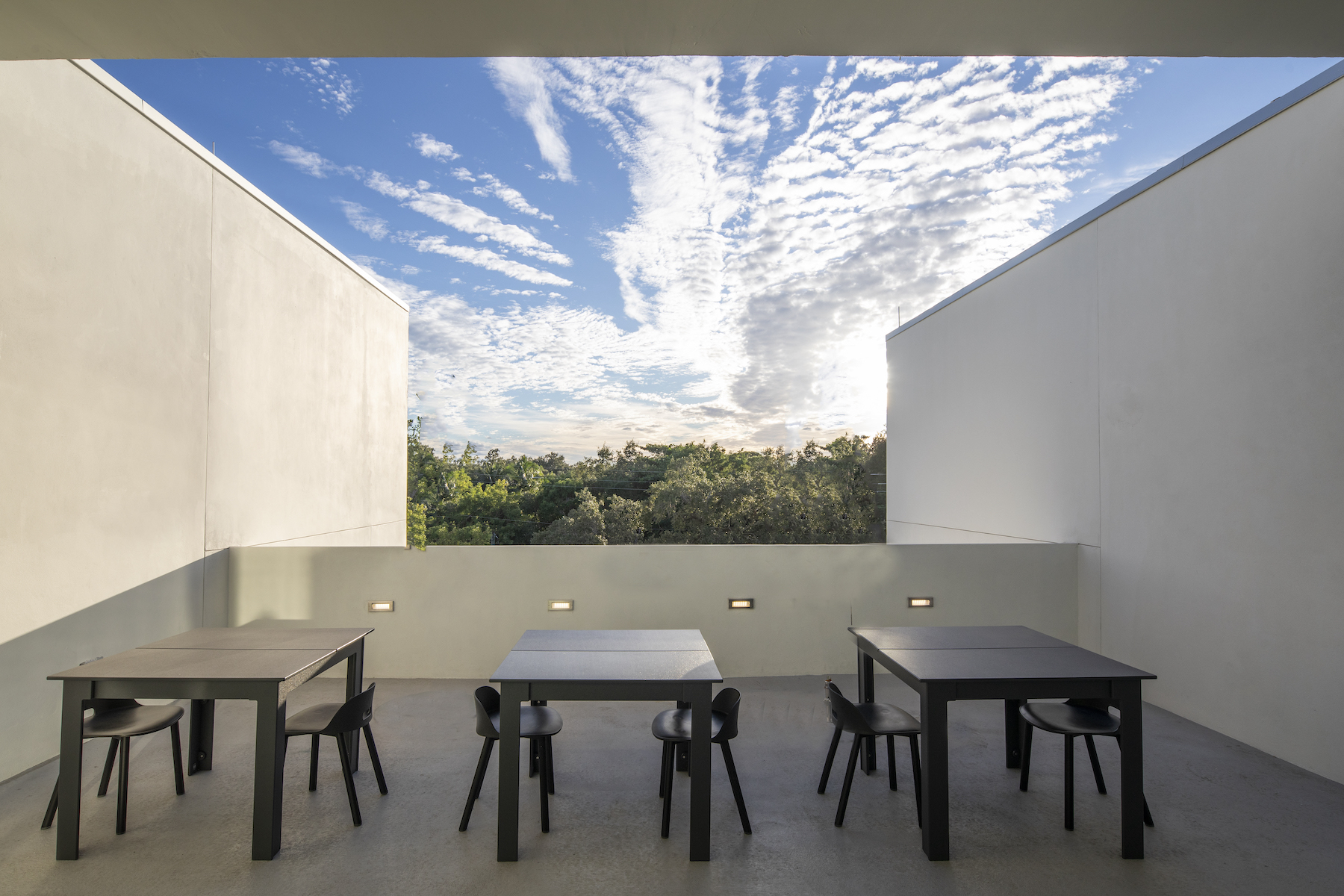 Another P&W project that dispensed with private faculty offices is the K-5 St. Stephens Episcopal Day School, also in Coconut Grove, which last October completed a 23,000-sf Arts and Innovation Center and a 3,700-sf Ministry Building, located at its entrance. This $9.4 million pavilion, constructed by Skanska, is an example of STEAM education in early childhood development that showcases principles of design flexibility and adaptability, team-based learning, and project-based outcomes.
Another P&W project that dispensed with private faculty offices is the K-5 St. Stephens Episcopal Day School, also in Coconut Grove, which last October completed a 23,000-sf Arts and Innovation Center and a 3,700-sf Ministry Building, located at its entrance. This $9.4 million pavilion, constructed by Skanska, is an example of STEAM education in early childhood development that showcases principles of design flexibility and adaptability, team-based learning, and project-based outcomes.
The design provides an array of informal learning spaces.
Related Stories
| Aug 11, 2010
Replacement school puts old school's materials to good use
Replacing an existing school in the University School District near St. Louis, Mo., the new Barbara C. Jordan Elementary School will accommodate up to 500 students in 24 classrooms. The $13 million school spans 64,834 sf and will use recycled elements from the old building, including mosaic tiles from water fountains, an entryway tile mural, and a freestanding masonry bench.
| Aug 11, 2010
Cherokee Nation center employs eco-friendly features
Three new schools for K-12 students are the focus of a $108 million, 473,000-sf Cherokee Nation multipurpose complex based in Cherokee, N.C. Designed by Padgett & Freeman Architects and built by BE&K Building Group, the center was designed to reflect the art and heritage of the Cherokee people, evidenced by the seven-sided shape of the two courtyard areas and traditional basketweave pat...
| Aug 11, 2010
Hillside school sports exciting shape
An education facility for 1,200 students and 300 teachers will grace a hillside in the Faroe Islands town of Torshavn. The 19,200-sm Faroe Islands Education Centre, designed by Copenhagen-based Bjarke Ingels Group, will have a panoramic view overlooking the sea, mountains, and harbor. The building's vortex shape radiates toward its surroundings while drawing attention to the center of the school.
| Aug 11, 2010
New Union City school to use remnants from old building
With 35 classrooms, a media center, science labs, and music rooms, Columbus Elementary School #3 in Union City, N.J., is being built on a confined site, so designer RSC Architects, in conjunction with HOK, will implement underground parking and a rooftop playground. RSC Architects also salvaged classical porticos from a former school at the site; they will be reused to create dramatic entryways...
| Aug 11, 2010
High-density planning allows abundant open space
Gilroy Unified School District's new Christopher High School in California opened its first phase this fall. The 1,800-student, 231,000-sf facility was designed with a high-density site plan that allows for both on-site sports fields and undeveloped open space. BCA Architects of Fremont, Calif., with Gilbane Building Companies as CM, collaborated with numerous user groups to plan the two-story,...
| Aug 11, 2010
And the world's tallest building is…
At more than 2,600 feet high, the Burj Dubai (right) can still lay claim to the title of world's tallest building—although like all other super-tall buildings, its exact height will have to be recalculated now that the Council on Tall Buildings and Urban Habitat (CTBUH) announced a change to its height criteria.
| Aug 11, 2010
Courtyard connects new and remodeled schools
Good Fulton & Farrell Architects of Dallas designed a major expansion and renovation at the Dallas Academy in Texas. The 22,900-sf addition serves as the school’s new front door and includes a library, student assembly area, cafeteria, seven classrooms, and administrative offices. The school’s existing 14,560-sf building was renovated to accommodate a lower school component, and...
| Aug 11, 2010
Connecticut high school gets a expansion and renovation
The Morganti Group, Danbury, Conn., is managing the construction of a $41 million addition and renovation project at Newtown (Conn.) High School. Designed by Fletcher Thompson, Shelton, Conn., the project consists of a 70,000-sf addition and 30,000 sf of renovations to the gymnasium and interior spaces.
| Aug 11, 2010
School district plans net-zero building
Camas (Wash.) School District is planning to utilize one of three energy sources—photovoltaics, wind turbine, or geothermal—to help take its new community high school completely off the grid. The school district commissioned Interface Engineering to explore all three options for the project, which is scheduled to break ground in August.
| Aug 11, 2010
LA high school takes design cue from historic Mexican architecture
The Los Angeles Unified School District recently opened the $75 million Felicitas and Gonzalo Mendez Learning Center, a high school in the Los Angeles neighborhood of Boyle Heights, near Little Tokyo. Designed by Nadel Architects in a joint venture with Barrio Planners Inc., the 114,000-sf school is vertically integrated, allowing the campus to fit on a compact, six-acre site.


